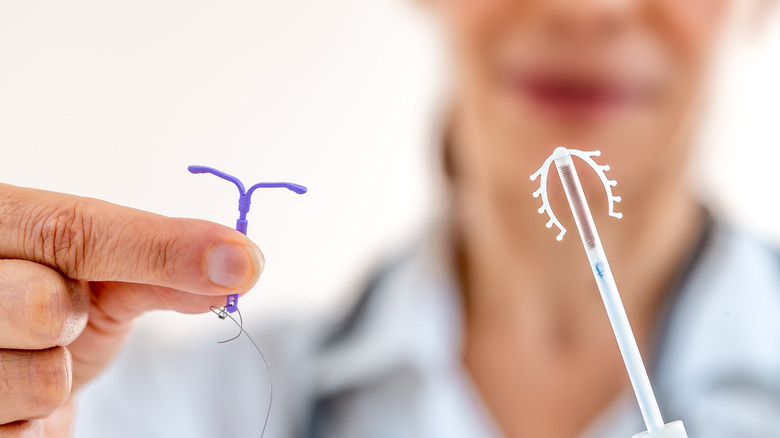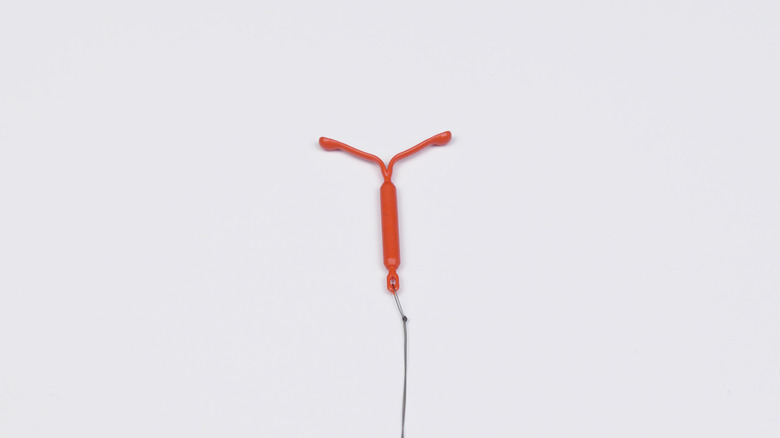Kyleena Vs. Mirena: Which Method Of Birth Control Is Better For You?
If you've experienced heavy menstrual bleeding, then chances are you've heard of the Kyleena and Mirena birth control options. Both of the United States Food and Drug Administration (FDA)-approved brands use a progestin called levonorgestrel (LNG) to help prevent unwanted pregnancy while also treating heavy bleeding, according to Single Care. Both methods are hormonal intrauterine devices (IUDs).
According to Medline Plus, an IUD is a small, plastic t-shaped device with strings attached that a medical provider inserts into your uterus to help prevent pregnancy. However, insertion can cause some pain, cramping, and minor bleeding.
In the case of the Mirena and Kyleena — both of which are made by Bayer HealthCare Pharmaceuticals, Inc. — they also contain hormones that release slowly over time, which may also suppress ovulation (via Single Care). While these IUDs seem similar and use the same type of hormones to prevent pregnancy, they do have a few differences, which might make one work better for you than the other. So which one should you use? Read on to find out.
Here's the main difference between Kyleena and Mirena
According to Single Care, while Kyleena and Mirena work similarly, there is a crucial difference: the dose of LNG each contains. The Kyleena has a total amount of 19.5 mg released slowly over five years, and the Mirena releases a total dose of 52 mg over five years, which means the Kyleena uses less LNG overall. Another notable difference is that the Kyleena uses a blue string and a silver ring visible on ultrasound. The Kyleena costs more at $2,000, while the Mirena costs about $1,400. However, both forms of birth control have coupons that could reduce the cost, as would insurance.
With both IUDs, your provider can insert a new one as soon as you have an old one removed, and they're both suitable for women at least 18 years of age. Both work to prevent pregnancy at more than 99% effective initially, with the Kyleena falling to 98.5% effectiveness at five years. Some doctors prescribe them off-label to help control heavy bleeding. Neither protects you against sexually transmitted infections, and they both have a list of possible side effects, including breast discomfort, acne, nausea, cramps, vaginal inflammation, abdominal pain, changes in menstrual bleeding patterns, and more (via Single Care). If you're interested in using one of these options, talk to your doctor to find out which method would work best for you.

